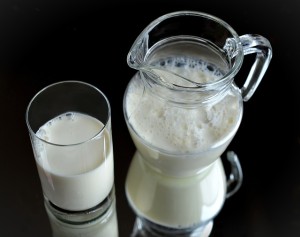If you are struggling with lower back pain that radiates down your leg, you might have hit the internet searching for answers, only to find the terms “sciatica” and “herniated disc” discussed frequently. This is because both conditions can cause debilitating back...
You open your eyes, stretch, and sit up, ready to start the day. But the moment your feet hit the floor, a sharp or aching pain shoots through your heels, arches, or the balls of your feet. Morning should feel refreshing, yet instead, you find yourself hobbling to the...
Are you a fitness enthusiast or a dedicated athlete who has suddenly been sidelined by a nagging, persistent pain in your calf and ankle? That sharp or aching sensation that flares up during or after activity could be the result of Achilles tendonitis. The Achilles...
Five Natural Foods that Improve Bone Health

Bones in the body help you move, protect your internal organs, and maintain the structure of your body. It’s critical to start thinking about your bone health because as early as age 25, it’s possible to start losing more bone than you’re building. When this happens, it can lead to thin, weak bones and osteoporosis.
For strong, healthy bones, it’s important to be aware of your diet and what kinds of foods you’re consuming. Incorporating calcium and vitamin D into your diet will help your bones stay strong and healthy and reduce the risk of fractures. It’s important to take these two vitamins together because vitamin D enables the body to absorb the calcium your bones need.
Keep reading to find out more about foods rich in calcium and vitamin D so you can add them to your diet for improved bone health.
Dark Leafy Greens
Dark leafy greens are packed full of calcium that will strengthen your bones. Some of these vegetables include kale, collard greens, turnip greens, spinach, broccoli, and Swiss chard. In addition to being high in calcium, dark leafy greens are among the best foods you can have to improve your health overall. Be sure to have a half cup to one cup of these super foods in at least one meal per day.
Calcium-fortified Cereal
Try starting your day off right with a calcium-fortified cereal. Be sure to choose a cereal that’s high in fiber and low in sugar, and then add milk. Total Whole Grain cereal with half a cup of milk provides 1,200 mg of calcium which is 100 percent of the recommended Daily Value that an adult needs each day.
Yogurt
Yogurt contains plenty of calcium, healthy bacteria, and probiotics. In an eight-ounce serving of yogurt, there is 400 mg of calcium. Opt for nonfat yogurt for a healthy snack that’s great for your bones.

Milk Alternatives
Although milk is a great source of calcium and vitamin D, not everyone can tolerate it. People who are lactose intolerant have trouble digesting dairy and miss out on nutrients they need for strong bones. Fortunately, there are plenty of alternatives that will still provide plenty of calcium and vitamin D. Milk alternatives such as enriched soy milk and almond milk contain 300 mg of calcium in one cup.
One of the most crucial aspects of ensuring that you consume the appropriate amount of calcium is to monitor your intake. Talk to your doctor about how to strengthen your bones and how to monitor your calcium intake to make sure you’re meeting your daily nutrient requirements.
If you’re worried that you’re not getting enough calcium or your bones are weak, make sure you talk to your doctor as soon as possible to stop the problem from getting worse. The physicians at Premier Orthopaedics specialize in osteoporosis care and providing complete care to patients in a comfortable environment. Click here to set up a consultation to speak with a physician at Premier Orthopaedics to make sure you’re taking the best possible care of your bones.
For more information on what you can do to prevent fractures and fracture treatment methods, click here to download our eBook, Understanding Fracture Care: Causes, Diagnosis and Treatment.


